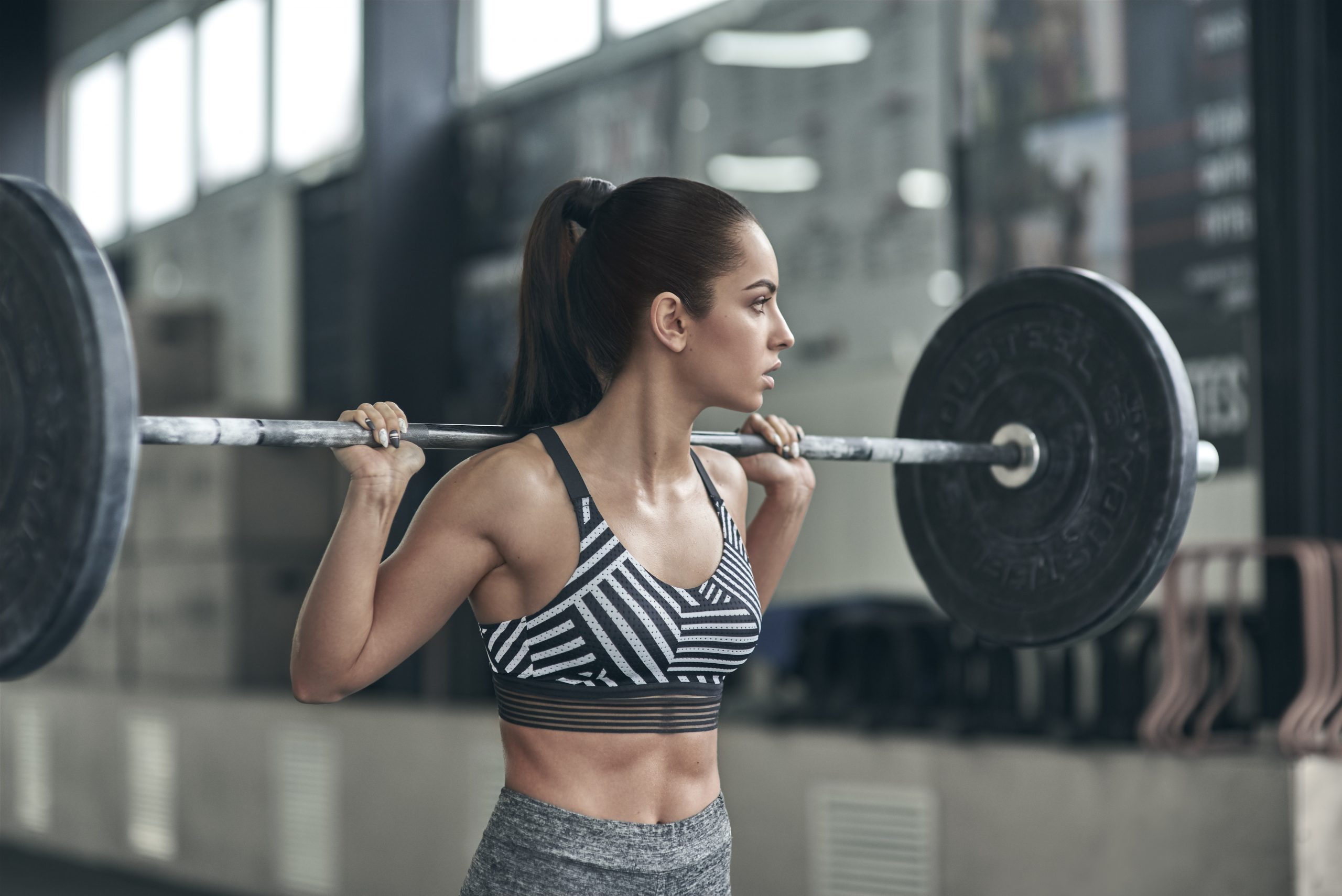
Have you ever wondered if the position your feet are in while squatting (also known as your “squat stance”) is the best position for YOU?
Before we get into the nitty-gritty of squat stance, make sure that you have watched our basic squat tutorial:
When done with correct form, squats are a great exercise for developing full-body strength (especially your hamstrings, legs, and glutes) and adding shape to your frame. However, if you are not squatting with the ideal squat stance for your body, you may be missing out on optimal results while also increasing your risk of injury.
There is not a one-size-fits-all squat stance.
A quick trick to find a good starting stance for your squat stance is to jump off the ground as high as you can, tucking your knees toward your chest. Where did your feet land? Is that close to where you put your feet when you squat? If not, it may be worth making some minor adjustments to get closer to that position. If you do decide to switch things up, just be sure to practice your new form under lighter loads!
What about the toes?
You may also be wondering if you should point your toes outward or straight ahead. As with most things related to the body–it depends! Let your feet point where they are comfortable as long as you can reach full depth and keep your knee joint in line with your foot.
Watch this video to see what we mean:
Below you’ll find a brief overview of some of the common squat stances that you may consider trying to see where you feel most at home!
The Narrow Squat
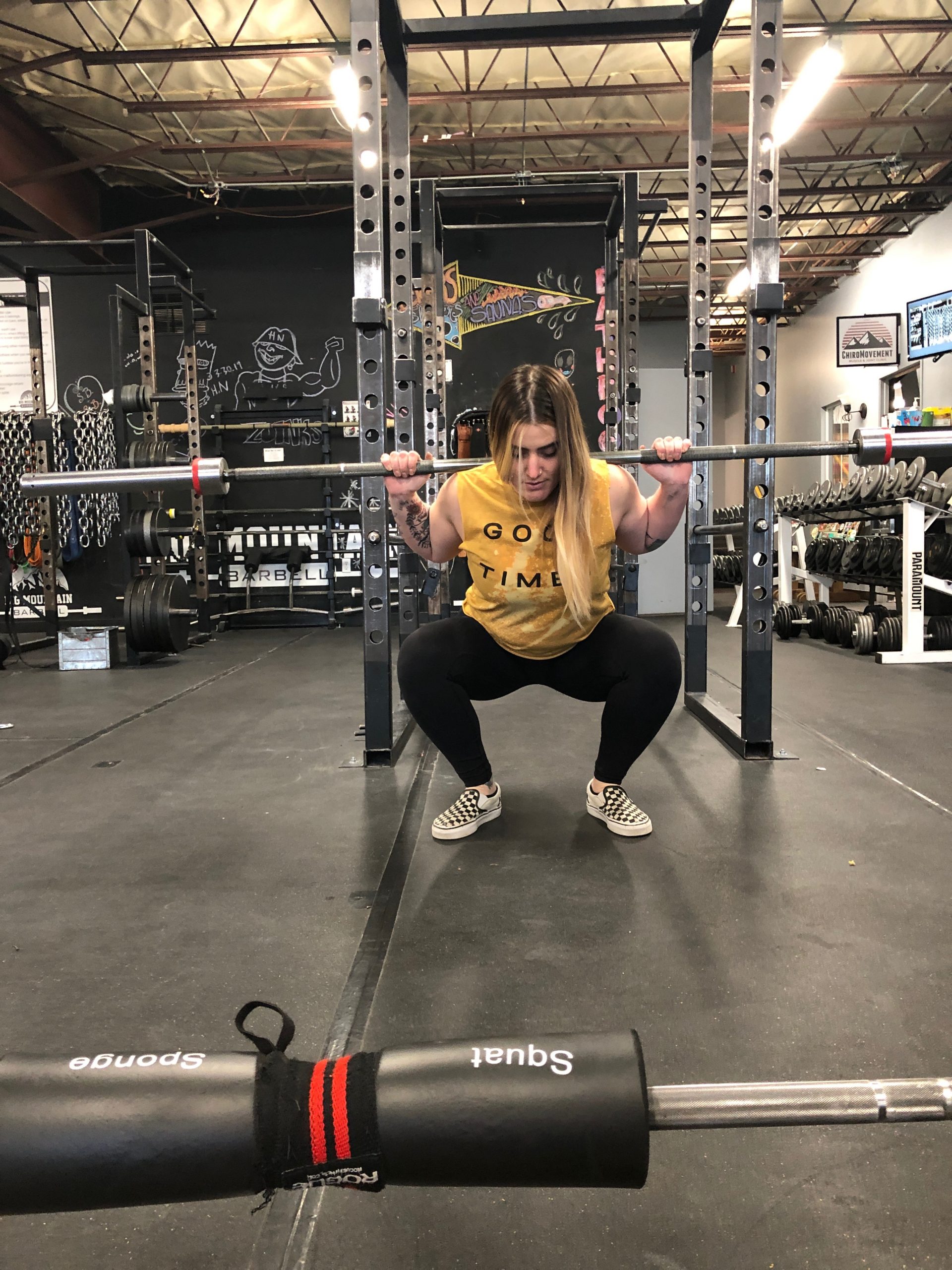
As you can see in the visual above when squatting with the narrow stance, your feet are in line with your shoulders, your thighs will drive forward and you will use more of your quads instead of your glutes, hips, and hamstrings.
If you have shorter femurs (hip to thigh area) with longer tibias (floor to knee), this stance would work great for you!
If you choose to use this type of squat, you may benefit greatly from wearing weightlifting shoes commonly referred to as “lifters.” These shoes have a hard, elevated heel that makes it easier to keep your heel planted to the floor in the more narrow position. Link for Weightlifting Shoes: https://www.amazon.com/s?k=shoes+weight+lifting&gclid=Cj0KCQiAw4jvBRCJARIsAHYewPNV5k_3P1Osbg3cWgeXUNJHpTOq26brXBUmstkkrGphj48UIHdF4fkaAtAcEALw_wcB&hvadid=323104057182&hvdev=c&hvlocphy=9029769&hvnetw=g&hvpos=1t1&hvqmt=b&hvrand=5999415855776820874&hvtargid=kwd-304404883171&hydadcr=8353_9904790&tag=googhydr-20&ref=pd_sl_6unkzqtjku_b
The Mid-Stance Squat
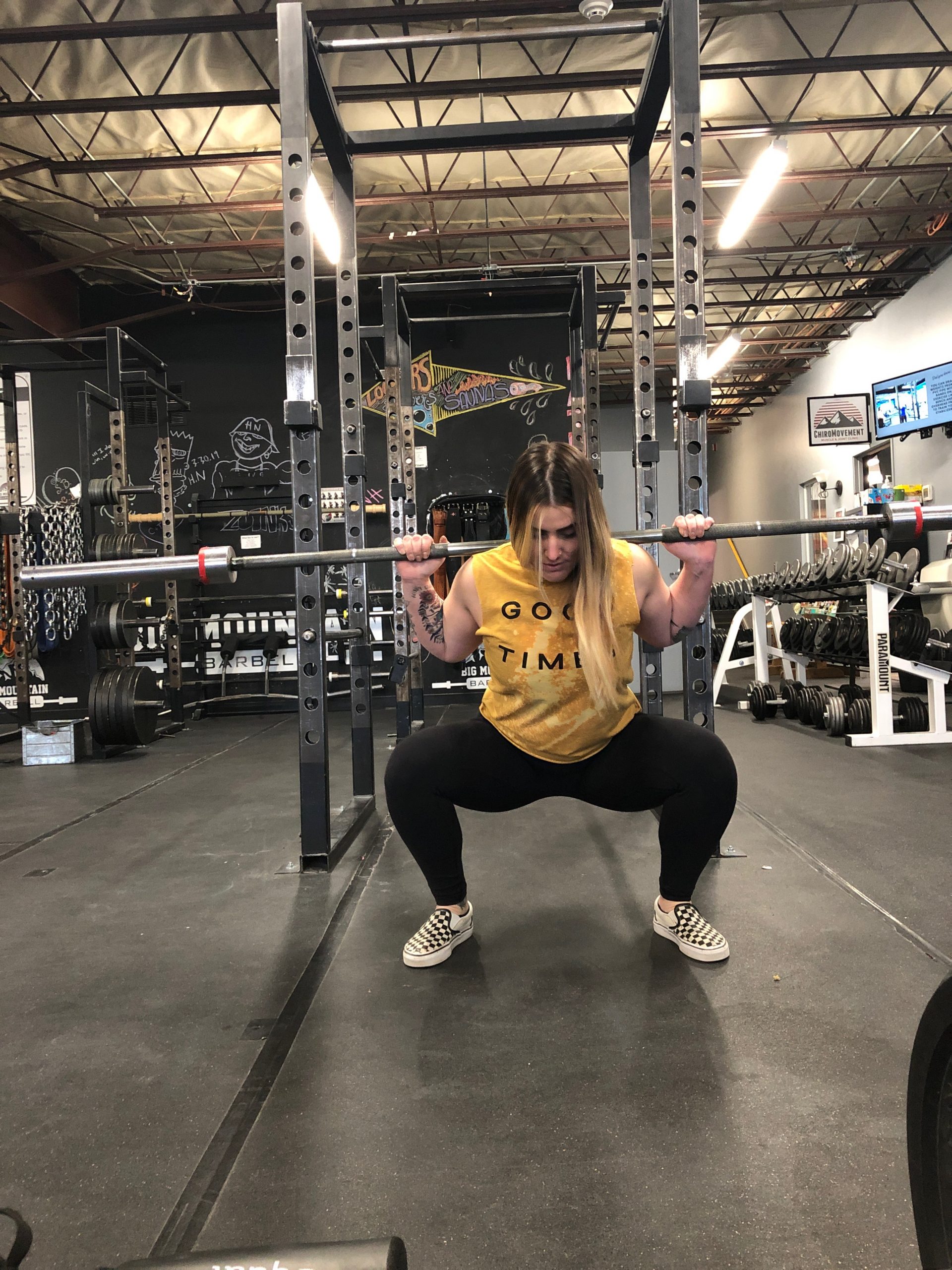
This stance is the most common and can be one of the best to start with if you’re unsure of your ideal stance. It requires greater use of the hamstrings than the narrow stance, but still puts a great deal of work on your quads! This mid-stance will still require fairly good ankle mobility but not as much as the narrow stance. Lifter shoes can still be used in this position, however, you may find that you prefer a pair of flat shoes, such as converse.
Mid-stance is best for those who have shorter femurs and shorter tibias (relative to their torsos) as it allows you to open up your knees to hit depth without having to go down as far!
The Wide Squat
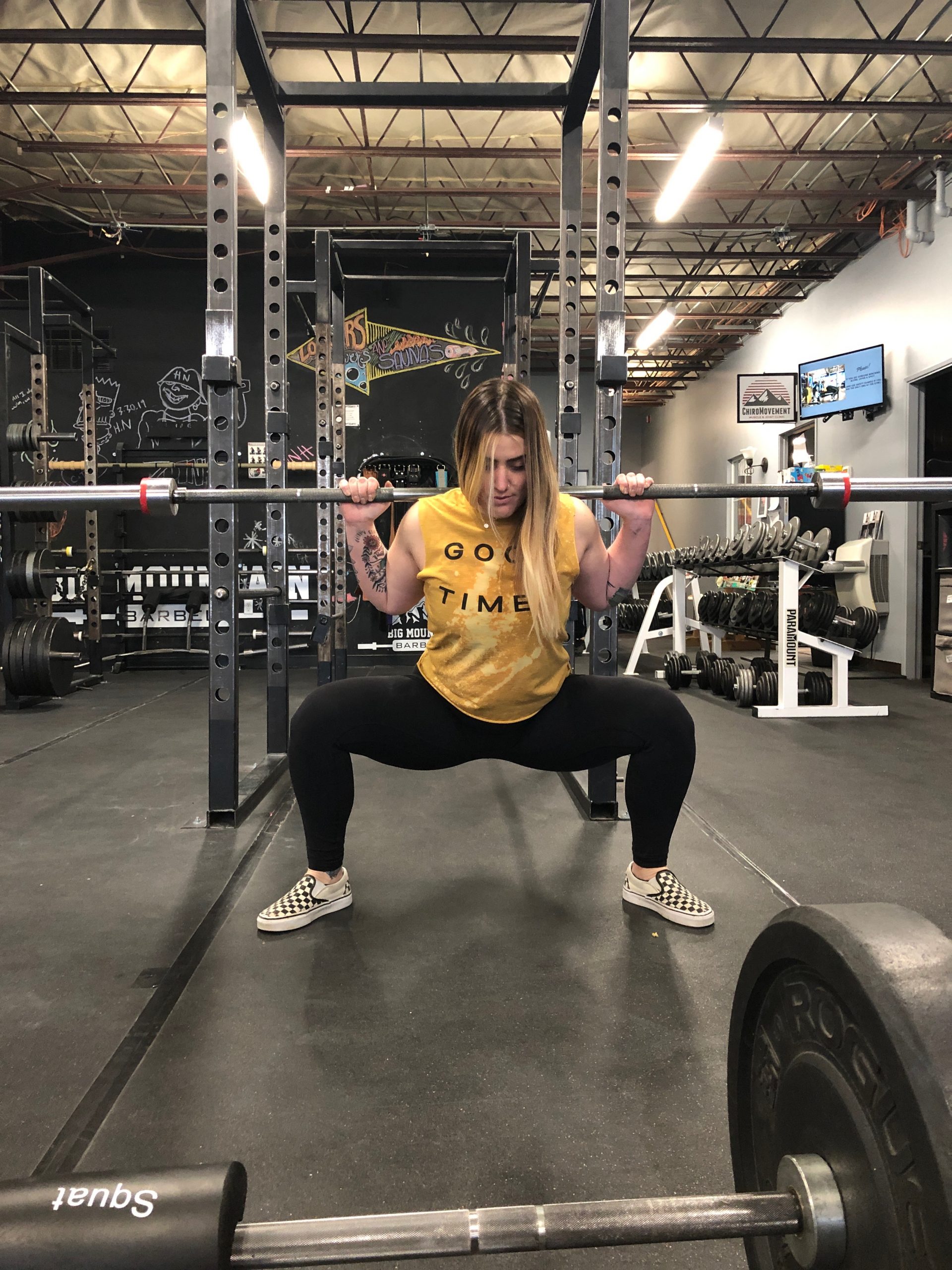
The wide stance squat requires great hip mobility and suits those with longer femurs and shorter tibias and torsos best. (Also great for dancers and horseback riders.)
Wide stance squats are very hip and glute dominant. Flat shoes, such as Converse, are the best way to go when squatting wide.
In this position, you must be focused on driving your knees out to stay open and wide. If you cannot keep your knees open and almost in line with your feet in this position, try bringing feet closer together to create a more optimal stance.
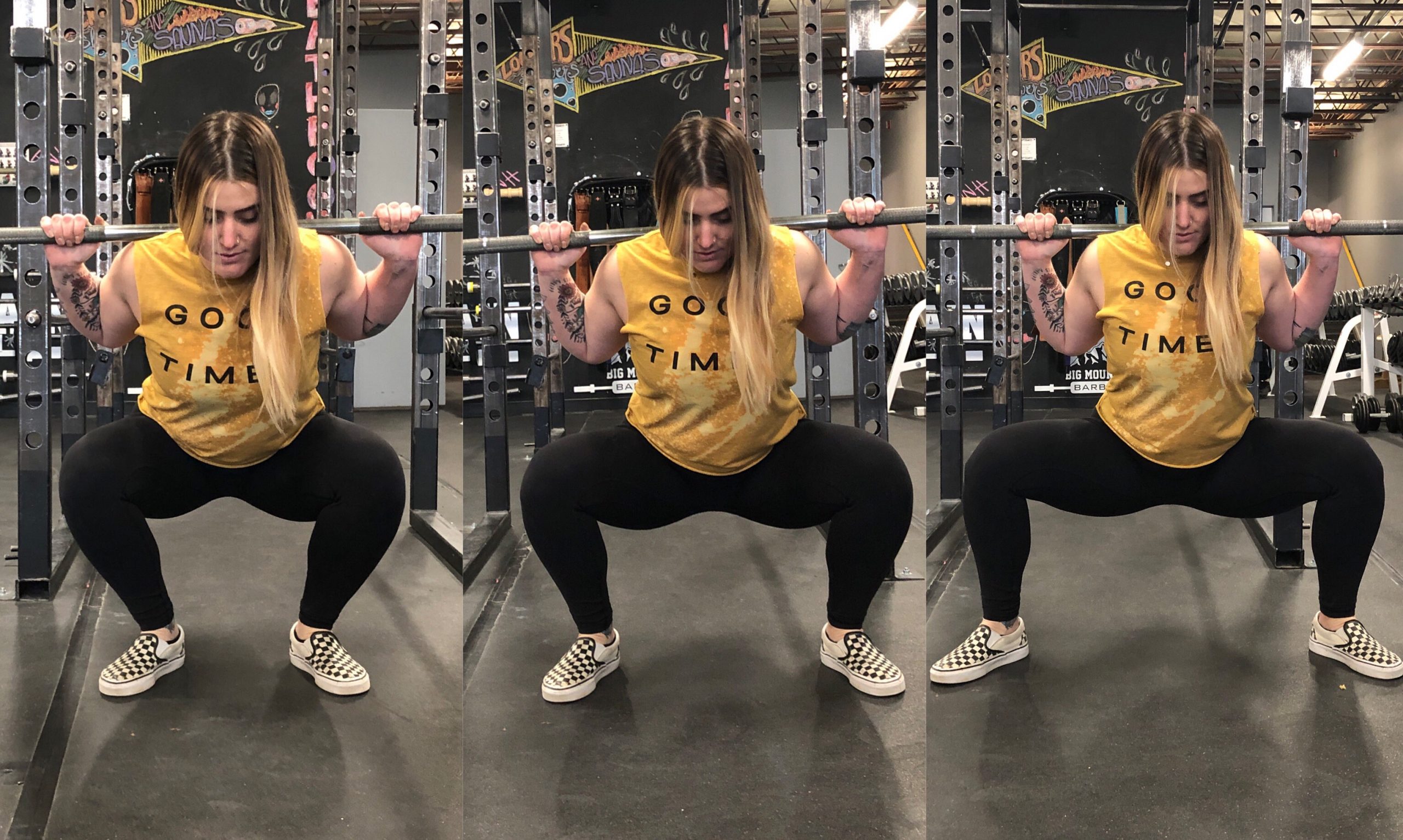
Comment below with your questions about squat stance!
Leave a Comment